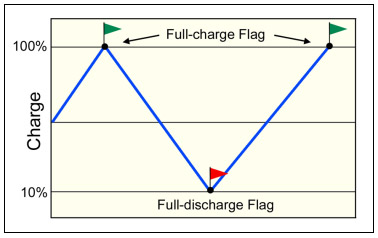-
A couple of users recently seemed to have gained range and improved battery performance after either an L1 slow charge to 100% , a lengthy road trip, or both.
Perhaps this is consistent with a recommendation on the Battery University site to do a battery calibration once every 3 months.
See :- BU-603: How to Calibrate a “Smart” Battery

-
A couple of users recently seemed to have gained range and improved battery performance after either an L1 slow charge to 100% , a lengthy road trip, or both.
here : - Battery Degradation and Performance Patternsmtndrew1 said:... So yesterday I pulled the 240V at 75% and let the car charge to 100% overnight on the 120V charge cable thinking that may give the car some cell balancing opportunity. I have no data to back it up, but it sure seems to have worked as I achieved my highest-ever capacity remaining estimate yesterday aside from the tightly-controlled Tony Williams test...
here : Soul SpySiLiZiUMM said:I'm back from a 500+ trip again :lol: 3 QC stations visited on each way. On our way back, we almost pushed the limits of the battery, skipping a few QC in Québec City. We arrived there at 3%, with the turtle blinking
On our way back, the deterioration values changed. It was "7EC 24 00 32 2B 00 06 0D" before, I have now "7EC 24 00 2D 2D 00 01 01".
Perhaps this is consistent with a recommendation on the Battery University site to do a battery calibration once every 3 months.
See :- BU-603: How to Calibrate a “Smart” Battery

-












![300W Car Power Inverter 12V to 110V,PiSFAU DC to AC Car Plug Adapter Outlet with Multi USB[24W USB-C] /USB-Fast Charger(24W) Car Inverter,Car Charger for Laptop Vehicles Road Trip Essentials](https://m.media-amazon.com/images/I/41-KedJShYL._SL500_.jpg)




















